#13: Start the Story Early (If Necessary)
Most stories start not long before the inciting incident, providing a brief description, moment, scene, or a few chapters which encapsulate the period BEFORE—before everything changes for the characters. Emma and Persuasion provide good examples of this.
Other stories, like Pride and Prejudice, start after the inciting incident—in medias res.
Yet other stories take a very different approach to exposition and start long before the inciting incident disrupts the story (note that starting long before the inciting incident does not necessarily mean that the telling of the exposition needs to be long—expositions that start early can still be brief). Jane Austen uses this technique in two of her novels: Northanger Abbey begins at Catherine Morland’s birth, and Mansfield Park begins years before Fanny Price is born.
These two novels start the exposition early for two different purposes:
- Northanger Abbey: To show the main character’s life trajectory, and to contrast the inciting incident (and what comes as a result) against the character’s entire life.
- Manfield Park: To demonstrate a prior formative moment which caused a drastic shift in the main character’s life, and created a new normal, which is then disrupted by the inciting incident.
Life Trajectory in Northanger Abbey
Northanger Abbey demonstrates the main character’s life trajectory prior to the inciting incident. The novel begins with the line:
No one who had ever seen Catherine Morland in her infancy, would have supposed her born to be an heroine.
After this establishment of theme (and the delightful, rather satirical approach of the entire novel), we learn of Fanny’s birth:
Her mother…had three sons before Catherine was born; and instead of dying in bringing the latter to the world, as anybody might expect, she still lived on—lived to have six children more…
We follow Catherine Morland’s childhood, learning that she prefers cricket to dolls, seeing her disinterest in learning and watching her quit music after only a year or instruction. The narrator jumps from Catherine at age ten to age fifteen, and we see her continued development:
To look almost pretty is an acquisition of higher delight to a girl who has been looking plain the first fifteen years o her life, than a beauty from her cradle can ever receive.
Catherine reaches seventeen, with nothing to interrupt the path that she is on, a point that the narrator draws attention to:
She had reached the age of seventeen, without having seen one amiable youth who could call forth her sensibility; without having inspired one real passion, and without having excited even any admiration but what was very moderate and very transient. This was strange indeed!
All this in the first chapter. By creating a life trajectory, it establishes a shared set of reference points with the reader, reference points that help us understand the main character and who she is prior to the inciting incident. These references are essential, because without them, we would be unable to understand Catherine’s choices throughout the novel—her life trajectory informs her naivety, her desire to be liked, her fascination with new people and places, and how she constantly turns to books as an escape.
The last paragraph of the first chapter establishes the inciting incident, which is placed in direct contrast with the main character’s life to this point:
[Mrs. Allen], a good-humoured woman, fond of Miss Morland, and probably aware that if adventures will not befall a young lady in her own village, she must seek them abroad, invited her to go with them.
The other benefit of this approach to exposition is that it allows the narrator to avoid infodumps later—it would be difficult to include all of these details as backstory later in the story without unnaturally piling them on.
The elements included in Northanger Abbey are referred to again and again throughout the story, both directly and indirectly. By journeying with Catherine from her birth to age 17, we are prepared for the much bigger journey she will take throughout the novel.
Prior Formative Moment/Shift in Mansfield Park
While the exposition of Mansfield Park covers a lot of ground, the main purpose is for us to experience a formative moment, a huge shift, in Fanny Price’s early life.
Manfield Park starts before Fanny’s birth, and focuses on the weddings of the prior generation. Three sisters become, respectively, Lady Bertram, Mrs. Norris, and Mrs. Price. Mrs. Price is the one whose marriage has disappointed her family by being beneath her station. Mrs. Price loses contact with her family, and only reestablishes it when expecting her ninth child. At this point, her oldest daughter, Fanny, is nine years old, and is about to experience a cosmic shift, caused by her aunts, Lady Bertram and Mrs. Norris, and her uncle, Lady Bertram’s husband, Sir Thomas.
Mrs. Norris was often observing to the others, that she could not get her poor sister and her family out of her head, and that much as they had all done for her, she seemed to be wanting to do more: and at length she could not but own it to be her wish, that poor Mrs. Price should be relieved from the charge and expense of one child entirely out of her great number. “What if they were among them to undertake the care of her eldest daughter, a girl now nine years old, of an age to require more attention than her poor mother could possibly give? The trouble and expense of it to them, would be nothing compared with the benevolence of the action.” Lady Bertram agreed with her instantly. “I think we cannot do better,” said she, “let us send for the child.”
Sir Thomas is initially resistant the idea but is won over by his sister-in-law and wife. As the scene continues, we come to understand the character of these three adults, and without having met Fanny, we know intuitively that this is not going to be a warm, welcoming place for her.
We meet Fanny in Chapter 2, as she begins her “long journey.” We are with her throughout this epic change; we feel her discomfort as she is introduced to the family, and we see into her mind and character:
Her consciousness of misery was therefore increased by the idea of its being a wicked thing for her not to be happy.
Fanny struggles on and on. Through her eyes, we see how inferior she feels compared to her cousins, and how unrefined. In this exposition, we also come to know, in more depth, one of the other key characters of the novel, Edmund Bertram.
A week had passed in this way, and no suspicion of it conveyed by her quiet passive manner, when she was found one morning by her cousin Edmund, the youngest of the sons, sitting crying on the attic stairs.
“My dear little cousin,” said he, with all the gentleness of an excellent nature, “what can be the matter?”
A touching scene follows in which Edmund helps Fanny share her thoughts. He comes to learn about her family and her relationships with her siblings. He also helps her write and send a letter, promising she will not have to pay for it. This first real moment between Edmund and Fanny sets up their entire relationship, which is such a huge part of the novel, and it is better experienced in scene rather than through summary or flashback.
Thus, in chapter 2, we experience this great upheaval in Fanny’s life, and we see her adjust to the new normal, the new status quo.
If there has been a formative moment, a grand shift in a character’s life, there is power in allowing the reader to experience it with the main character. If this sort of shift merits being part of the exposition, it is typically large enough that in a different story it could be the inciting incident. Yet if used as exposition, it establishes a new normal, which is then disrupted by the inciting incident.
If Fanny’s removal to Mansfield Park was the inciting incident, the novel would be about ten-year-old Fanny and the internal and external journey she takes as she adjusts to her new life. Instead, this adjustment is covered in a single chapter, paving the way for the actual inciting incident, which is Mr. Norris’ death and the arrival of a new set of rather disruptive characters: Mr. and Mrs. Grant, Mr. Crawford, and Miss Crawford. These new characters disrupt not just Fanny’s life, but the lives of the entire family. But for Fanny, this disruption, this inciting incident, feels deeper, because this is not the first huge disruption she has experienced.
In Conclusion
In Northanger Abbey and Mansfield Park, Jane Austen uses two of the major approaches for starting a story early: providing a life trajectory, and depicting a prior formative shift. Yet starting the story early is not the only good approach to exposition, nor should it be the default. In Persuasion there are several formative shifts for Anne prior to the start of the novel—her mother’s death and her short-lived engagement. Yet Anne’s experience of these moments is revealed effectively through backstory, and in fact, their placement later in the story serves to reveal Anne’s character and her regrets at key moments.
If you want to start the story early, there needs to be a good reason for us to experience these scenes with the character. This experience should be enlightening to us, and, like in Northanger Abbey and Mansfield Park, there needs to be a reason that they must be experienced at the beginning. We should start our stories early if it helps us understand the logic of everything else.
Exercise 1: Find another story—a book or a film—that starts early. Now analyze it. Is it painting a character trajectory? Is it showing a prior disruptive moment? Or is it doing something else entirely?
Exercise 2: Take one of your characters (or an idea you have for a character) and write a 500-word life sketch, that begins either before or at their birth. Once you’re finished, analyze the results:
- What new things did you learn about your character?
- What were the biggest, most defining moments in your character’s early life? What shaped them into who they are as they enter the story?
- Are there elements of your character’s early that should be woven into the story as backstory? Or is this a case where it would be useful to experience the character’s early life as part of the exposition?
Even if none of the life sketch is incorporated into the story, writing it is a useful practice that can help you understand your character, their personality, and their choices.
Exercise 3: Take a fairy tale or classic story that does not give many specific details about a character’s younger years (for example, Elizabeth Bennet in Pride and Prejudice). Brainstorm specific events and incidents that could have occurred before the start of the story, and would be in keeping with their character, the story world, and what we do know.

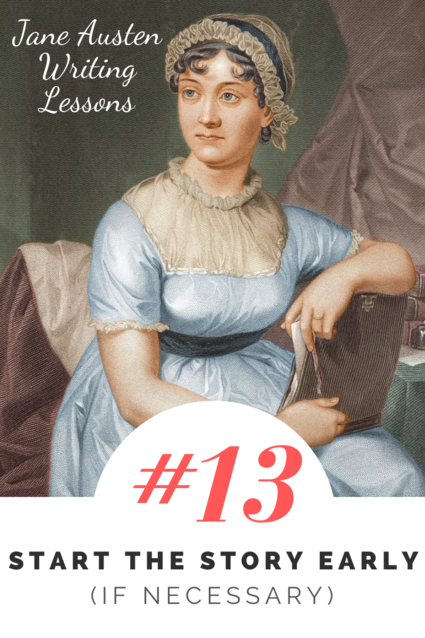



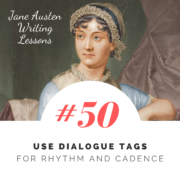
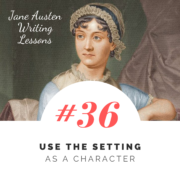
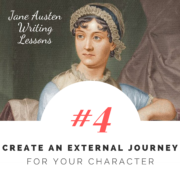
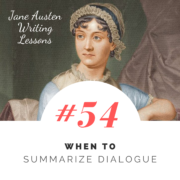
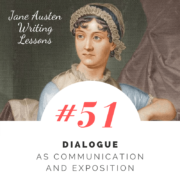
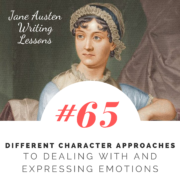


Leave a Reply
Want to join the discussion?Feel free to contribute!